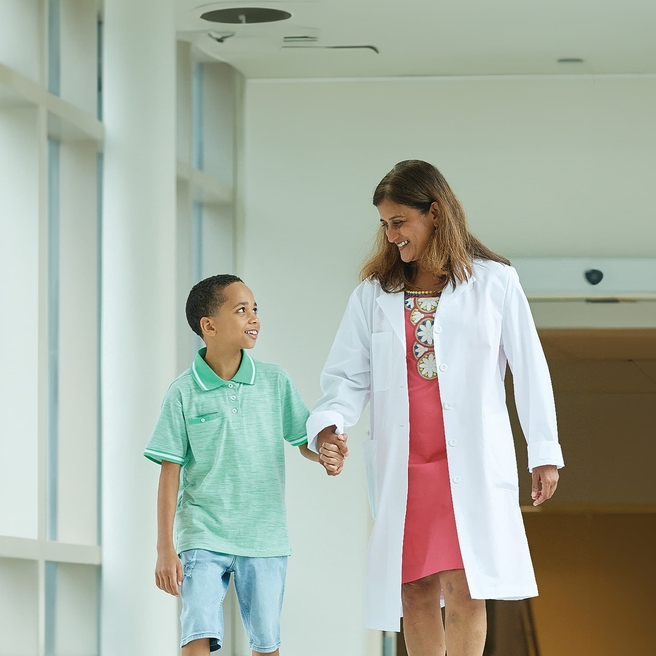What is a cardiac arrhythmia?
An arrhythmia is an irregular heartbeat, which is either too fast or too slow.
Why do arrhythmias occur?
A heartbeat is caused by an electrical impulse traveling through the heart. Electrical signals travel through the heart using conduction pathways, similar to the way electricity flows through power lines from a power plant to a house. This causes the heart's chambers to contract and pump blood. The upper chambers (atria) contract first, and the lower chambers (ventricles) contract second, producing the familiar “lub-dub” heartbeat sound.
Heartbeats begin in the sinus node (also called the sinoatrial node, or SA node), a small area of tissue in the right upper chamber of the heart (right atrium). The sinus node is “plugged in” to the body’s nervous system, and it responds to signals from the brain. It also reacts to adrenaline levels in the blood that regulate the heart rate throughout the day.
The atrioventricular node (also called the AV node), is the electrical connection between the upper and lower chambers of the heart. Heartbeats travel through the upper chambers first and are then transmitted down the AV node to reach the lower chambers. A complex network of electrical pathways known as the His-Purkinje system distributes the electrical impulse through the ventricles after it passes through the AV node.
Slow heart rhythms, or bradyarrhythmias, occur when the sinus node is damaged or not functioning normally. They can also occur when the AV node or His-Purkinje system is not doing its job of transmitting signals from the upper to the lower chambers.
Fast heart rhythms, or tachycardias, are often the result of misfiring electrical signals in the upper or lower heart chambers, which drown out signals from the sinus node. This may happen due to a “hot spot” in the heart that is beating too rapidly, or abnormal additional electrical pathways within the heart that cause the electrical signal to race around a loop.
